A PAIR OF ITALIAN PIETRA DURA PANELSFlorence, probably late 19th century, the moulded frames probably later Each depicting a fruiting and blossoming orange tree, amongst sprays of bluebells, all issuing from an ormolu-mounted and swagged jardiniere raised on a pedestal and within a balustraded border, in coloured marbles including lapis-lazuli, rosso antico and giallo antico, against a black paragone ground, the hanging loops, moulded border probably later, 126cm high, 64cm wide, (49 1/2in high, 25in wide), each (2)FootnotesProvenance: Acquired from the French trade, Paris, September 1990. The Art of Pietra Dura: From the mid-16th century the art of pietra dura, literally "hard stones" in Italian, was widespread in Italy. Florence became the most important centre for this art. The leading patrons were members of the Medici family, including Cosimo I (r. 1569-74), his son Francesco (r. 1574-87), and Cosimo's brother Ferdinand I (r. 1587-1609), who formally established the Grand Ducal workshop, the Galleria dei Lavori, in 1588. The artistic creations in stone were admired at all European courts and often offered as diplomatic gifts by the Medici. A Design for the Medici: The present panels relate to an important early 17th century group whose design has been attributed to the Florentine architect and sculptor Matteo Nigetti (1560/70 - 1648). The group of panels were commissioned by the Medici family for the Villa del Poggio Imperiale, just outside Florence. By 1691, the walls of the oratory of the Villa were recorded as being decorated with pietra dura panels of orange trees in jardinieres and flower-filled vases. Later History of the Medici Panels: When the Poggio Imperiale was dismantled in the late 18th century (to be reconstructed in a neoclassical style) the pietra dura panels were put into storage. By 1789 eleven of the panels are recorded in an inventory of the Opificio delle Pietre Dure. A photograph of circa 1865-70, shows six of these panels on display in the 'Sala di ostensione' at the Opificio delle Pietre Dure (see comparative image). The panels on display c. 1865-70 were two with blossoming orange trees on light ground, two flower-filled vases on a dark ground, and a further two flower-filled vases on dark ground mounted into a cabinet. The Galleria dei Lavori (later called the Opificio delle Pietre Dure) suffered a significant financial crisis after the proclamation of the Kingdom of Italy in 1861 and was forced to sell off its collections, including part of this series of panels. Two panels were acquired by the Victoria & Albert Museum (then called the South Kensington Museum) at the 1867 Universal Exhibition in Paris. An additional seven were sold shortly afterward to private buyers. Today six examples are extant in Museum collections: two at the Opificio, two at the Victoria and Albert Museum, one at the Fine Art Museum, San Fransisco and another at the Museum of Fine Arts, St. Petersburg, Florida. Origin of the Present Panels: Hardstone workshops were particularly active in Florence in the 18th and 19th centuries, meeting the considerable demand established by collectors and travellers on the Grand Tour and using famous models at the Opificio as inspiration. It is possible that this was the origin story of the present panels. There are four known pietra dura panels from the original Medici group, depicting orange trees, on a pale ground. One of these is at the V&A and a further three were illustrated in an unnamed collection (see comparative image and Jean Lévêque (ed.), Jansen, Un Siècle de l'Histoire de Paris, 1971, pp.70-71). The example now at the V&A would have been widely viewed when exhibited at the 1867 Universal Exhibition in Paris. Following the sales of these panels from the Opificio, this particular design must have become known and copied. It is possible that following the sale of the panels from the Opificio, the present panels were made. Related Panels in Museum Collections: •Opificio delle Piet
A PAIR OF ITALIAN PIETRA DURA PANELSFlorence, probably late 19th century, the moulded frames probably later Each depicting a fruiting and blossoming orange tree, amongst sprays of bluebells, all issuing from an ormolu-mounted and swagged jardiniere raised on a pedestal and within a balustraded border, in coloured marbles including lapis-lazuli, rosso antico and giallo antico, against a black paragone ground, the hanging loops, moulded border probably later, 126cm high, 64cm wide, (49 1/2in high, 25in wide), each (2)FootnotesProvenance: Acquired from the French trade, Paris, September 1990. The Art of Pietra Dura: From the mid-16th century the art of pietra dura, literally "hard stones" in Italian, was widespread in Italy. Florence became the most important centre for this art. The leading patrons were members of the Medici family, including Cosimo I (r. 1569-74), his son Francesco (r. 1574-87), and Cosimo's brother Ferdinand I (r. 1587-1609), who formally established the Grand Ducal workshop, the Galleria dei Lavori, in 1588. The artistic creations in stone were admired at all European courts and often offered as diplomatic gifts by the Medici. A Design for the Medici: The present panels relate to an important early 17th century group whose design has been attributed to the Florentine architect and sculptor Matteo Nigetti (1560/70 - 1648). The group of panels were commissioned by the Medici family for the Villa del Poggio Imperiale, just outside Florence. By 1691, the walls of the oratory of the Villa were recorded as being decorated with pietra dura panels of orange trees in jardinieres and flower-filled vases. Later History of the Medici Panels: When the Poggio Imperiale was dismantled in the late 18th century (to be reconstructed in a neoclassical style) the pietra dura panels were put into storage. By 1789 eleven of the panels are recorded in an inventory of the Opificio delle Pietre Dure. A photograph of circa 1865-70, shows six of these panels on display in the 'Sala di ostensione' at the Opificio delle Pietre Dure (see comparative image). The panels on display c. 1865-70 were two with blossoming orange trees on light ground, two flower-filled vases on a dark ground, and a further two flower-filled vases on dark ground mounted into a cabinet. The Galleria dei Lavori (later called the Opificio delle Pietre Dure) suffered a significant financial crisis after the proclamation of the Kingdom of Italy in 1861 and was forced to sell off its collections, including part of this series of panels. Two panels were acquired by the Victoria & Albert Museum (then called the South Kensington Museum) at the 1867 Universal Exhibition in Paris. An additional seven were sold shortly afterward to private buyers. Today six examples are extant in Museum collections: two at the Opificio, two at the Victoria and Albert Museum, one at the Fine Art Museum, San Fransisco and another at the Museum of Fine Arts, St. Petersburg, Florida. Origin of the Present Panels: Hardstone workshops were particularly active in Florence in the 18th and 19th centuries, meeting the considerable demand established by collectors and travellers on the Grand Tour and using famous models at the Opificio as inspiration. It is possible that this was the origin story of the present panels. There are four known pietra dura panels from the original Medici group, depicting orange trees, on a pale ground. One of these is at the V&A and a further three were illustrated in an unnamed collection (see comparative image and Jean Lévêque (ed.), Jansen, Un Siècle de l'Histoire de Paris, 1971, pp.70-71). The example now at the V&A would have been widely viewed when exhibited at the 1867 Universal Exhibition in Paris. Following the sales of these panels from the Opificio, this particular design must have become known and copied. It is possible that following the sale of the panels from the Opificio, the present panels were made. Related Panels in Museum Collections: •Opificio delle Piet

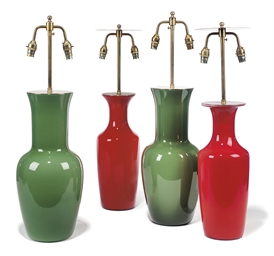
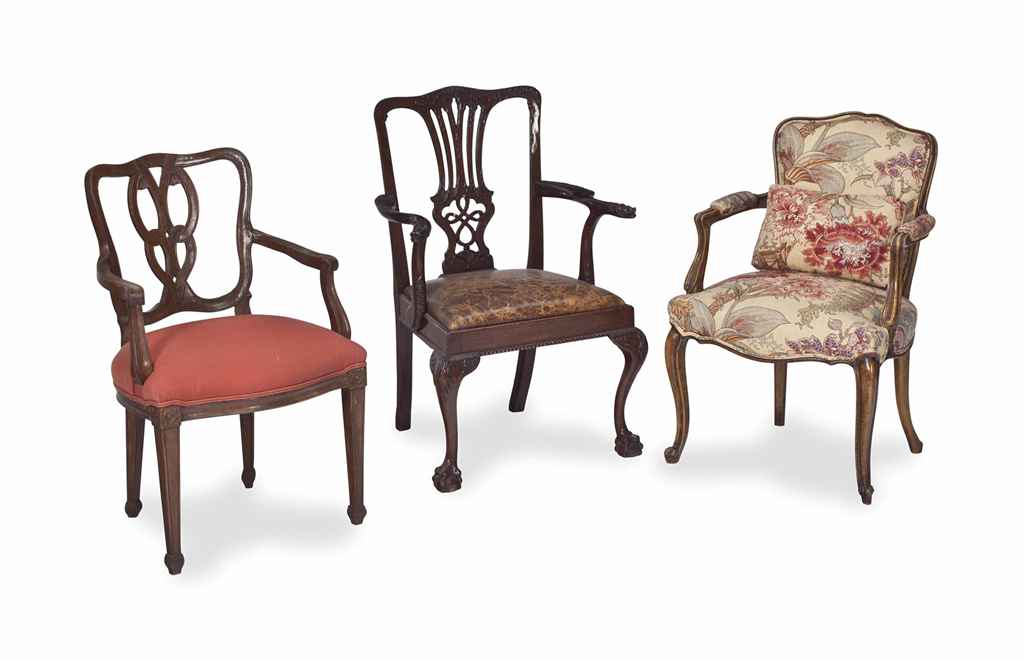

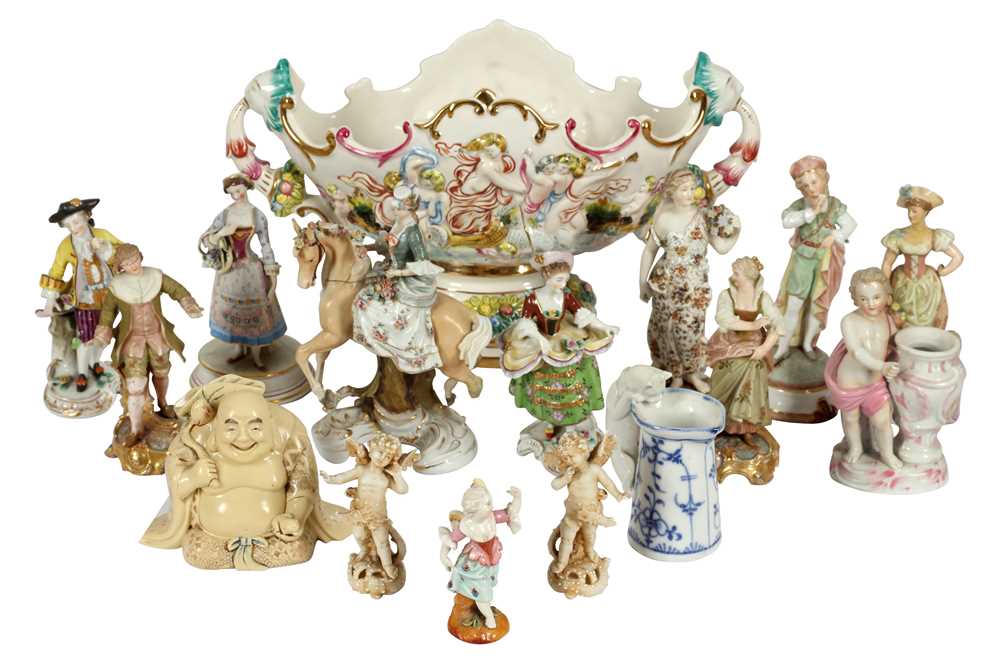


.jpg)




.jpg)
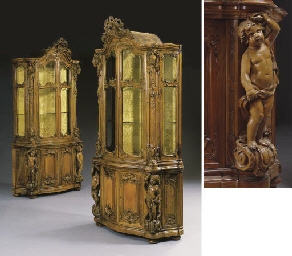
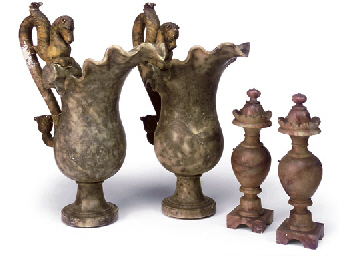
Try LotSearch and its premium features for 7 days - without any costs!
Be notified automatically about new items in upcoming auctions.
Create an alert